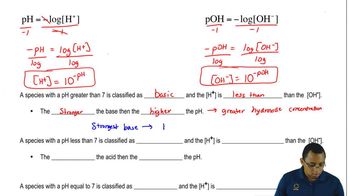How will changing the conditions in an enzymatic reaction affect the rate of that reaction? Explain why in each case.
f. Decreasing the amount of substrate by half
 Verified step by step guidance
Verified step by step guidance Verified video answer for a similar problem:
Verified video answer for a similar problem:



 1:6m
1:6mMaster Factors Affecting Enzyme Activity Concept 1 with a bite sized video explanation from Jules
Start learning